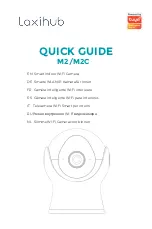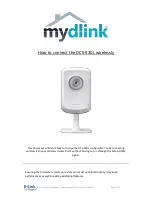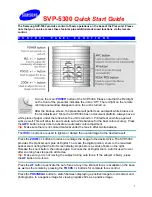
Page 38
Operation
TM-1327GE Hardware
selection can help optimize color contrast by selecting the LUT value. Gamma 0.45 is logarithmic and is
closed to human perception.
When LUT is selected, black-level adjustment must be more accurate than for B/W cameras.
For a detailed timing chart, please refer to the standard AccuPiXEL camera data sheet, or contact JAI
PULNiX.
8.2.6 Interpolation Software
The color interpolation can be performed in the frame grabber or by using the host computer’s CPU.
Most major frame grabbers with processing capability provide tools for color interpolation. Software
vision packages also provide color interpolation capability, but speed and performance may be
determined by the PC’s resources and by the complexity of the interpolation routine.
8.2.7 Color Interpolation
The Bayer pattern color filter array (CFA) consists of R, G, and B primary colors. Each pixel represents
one of three colors. In order to display or print color images, the signal has to be converted to RGB
output, which has three independent channels (outputs) and sync signals.
Color interpolation software or firmware performs the color
preprocessing by filling the missing color pixels with neighboring
pixels. It then separates the stream of data, (8-bit or 10-bit) into 3 (RGB)
data (8-bit x 3) and adds the color matrix to adjust and balance each of
the R,G, and B channels (white balance or color balance).
The image quality depends on the camera’s own pixel data (including
pixel data independency from neighboring pixels, noise and color filter),
and interpolation of the software algorithm such as 3 x 3 interpolation, 2
x 2 interpolation, color matrix, white balance capability, etc.
All AccuPiXEL color cameras are carefully designed for maximum color performance. JAI PULNiX
strongly suggests that you use digital output for the best performance.
Some software is used on board (FPGA or DSP) to perform the interpolation. Other software simply
uses the host computer’s memory and CPU. The process speed may vary depending on the architecture
and speed of the computer.
8.3 Electronic Shutter
The TM-1327GE has a substrate drain-type shutter mechanism which provides a superb picture at
various speeds without smearing. A built-in flexible shutter speed control selects the electronic shutter
rate from 1/30 to 1/21,000.
With VINIT high (CC1), the CCD keeps discharging. With an active low pulse to VINIT, the camera
resets and purges the charge momentarily. Then it starts integrating for the period of shutter control set
by either an external pulse width or internal shutter control. Progressive scanning permits a full 1040
Green
Green
Green
Green
Green
Red
Red
Blue
Blue
















































